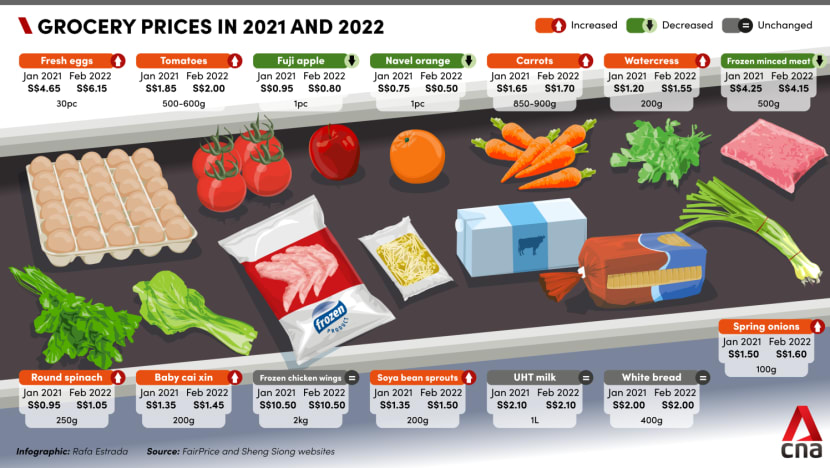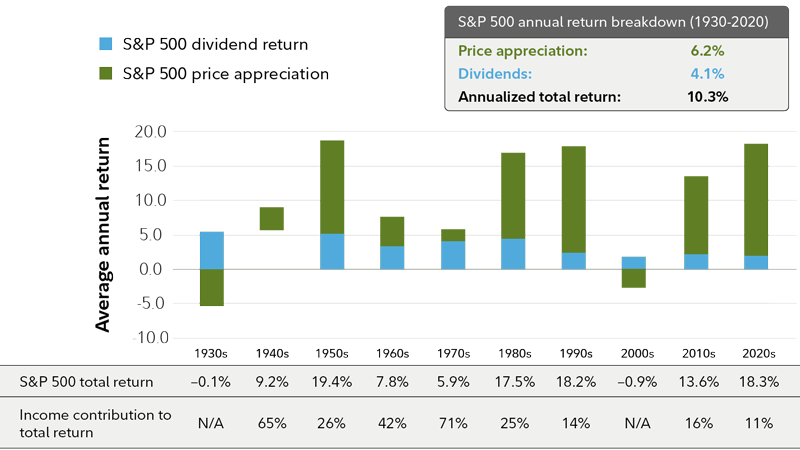
Everything from petrol to instant noodles has gotten more expensive in Singapore – and consumers are feeling the pinch. Petrol prices have crossed $3 a litre and even fruits and vegetables have gotten pricier.

In March, Singapore’s headline inflation accelerated to 5.4%, the highest level in nearly a decade. Amid this period of high inflation, you may be wondering how best to manage your money. We’ve got you covered.
The impact of high inflation
Some inflation is normal – it’s a sign that the economy is growing. But high inflation can be a challenge.
We’re currently seeing elevated inflation in Singapore and other countries, in part due to COVID-related supply chain bottlenecks, and sharp rises in oil and commodities prices driven by the war in Ukraine.
In the US, inflation is at a 40-year high. To curb soaring prices, the Federal Reserve raised interest rates by 0.5% this month and plans to continue doing so in the months ahead. Higher rates make it more expensive for businesses and households to borrow money. As a result, they spend less. The economy slows and the rate of price increases decelerates.
Singapore’s interest rates will likely track the upward trajectory for US interest rates. This means that the cost of mortgages, credit cards, and car loans could rise this year.
For consumers: Cash is not always king
In uncertain times, it’s important to have cash on hand in your emergency fund. Experts typically recommend setting aside at least three months of your salary as a safety net.
But holding on to too much cash can do more harm than good. With inflation at a 10-year high in Singapore, you’re losing purchasing power on your savings. The basic bank interest rate is usually 0.05%. Assuming inflation stays elevated above 3%, your cash is being eroded by inflation day by day.
To make the most of your hard-earned money, consider investing in the stock market for better returns. For example, the S&P 500 has historically generated average returns of 10% each year – enough to outpace inflation.
For long-term investors: Diversification matters
If your goal is to build wealth for the long-term, having a diversified portfolio is key. This holds true across all economic conditions, inflationary or otherwise.
A well-diversified portfolio contains a mix of stocks, bonds and other assets like REITs and gold. This means there will be some investments that remain resilient when inflation is rising, and some that perform well when inflation is muted.
Ritesh Ganeriwal, head of investment advisory at Syfe, notes that REITs outperform when inflation is moderately high. As prices rise, so do rents. This increases the amount of rental income REITs can earn.
If you already have a well-rounded portfolio, there’s no need to panic about high inflation, or drastically alter your investment plan. Instead, keep calm and stick to your strategy, especially if you’re a long-term investor.
For stock investors: Consider dividend stocks
If you’re deciding which stocks to invest in amid high inflation, consider dividend stocks.
Dividend stocks have historically helped hedge against inflation. According to research by investment firm Fidelity, during periods of high inflation, the fastest dividend growers in the S&P 500 outperformed the broader market, on average.
This makes sense. Companies that pay regular dividends are often profitable with stable sales, strong margins, and excess free cash flow. Such companies also tend to have pricing power in an inflationary environment. They’re able to pass on higher costs to consumers while maintaining margins and profitability. These qualities give them an edge during challenging times, and help them increase in value.
Amid the current market selloff, dividends can also support stock returns. Fidelity notes that when stock prices in the S&P 500 fell during the 1930s and 2000s, dividends almost completely offset the decline. Since 1930, dividend payments have in fact accounted for almost 40% of the S&P 500’s total return.

Sectors that are known for paying attractive (and growing) dividends include energy, consumer staples, real estate, and healthcare.
However, don’t simply chase stocks with the highest dividend yields. When a stock price falls, the dividend yield actually increases. As such, dividend yield alone isn’t a good gauge of a company’s financial health. Instead, look for companies with a track record of raising their dividend per share.
How to manage high inflation
Surging prices can be a strain on Singaporeans’ wallets. But there are investments you can use to outpace inflation, like REITs and dividend stocks. A good idea is to own a diversified portfolio of various assets. Whether there’s rising inflation or low inflation, investors with well-rounded portfolios are likely to stay on course to meet their long-term goals.
Now can be a good time to start investing if you aren’t already. Look to broad-based options like Syfe’s Core Growth portfolio, or Syfe REIT+ for exposure to Singapore’s largest REITs.
Prefer to invest on your own? A brokerage account like Syfe Trade lets you invest in US stocks and ETFs simply and securely. You get free trades every month, and a welcome bonus of $60 when you fund your account and start trading.



You must be logged in to post a comment.